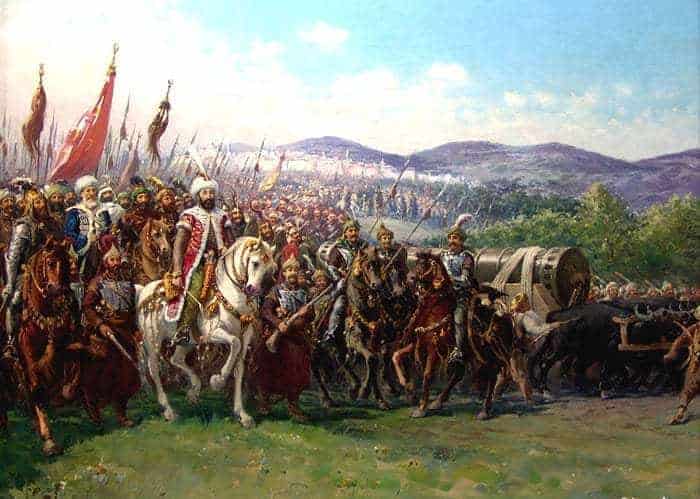On May 29, 1453, the city of Constantinople fell and signaled the official fall of the Byzantine Empire, even though it had been on its last legs for centuries. Indeed, by the time Constantine XI died in his kingdom’s capital, the ‘empire’ was little more than the city and a couple of small pieces of land. Nonetheless, the sack of Constantinople by the Ottomans (led by Sultan Mehmed II) was a historic moment as the Muslims finally took the city they had coveted for hundreds of years.
Background
The Byzantine Empire had been fractured beyond repair for hundreds of years (some suggest the sacking of the city by the Crusaders in 1204 was the beginning of the end). The city of Constantinople survived numerous attempts at conquest as the sturdy Theodosian Walls kept marauders at bay. Since the Arabs tried to conquer the city in the 670s, Muslims desperately tried to make it their capital.
Although a 1373 treaty ensured the Byzantine emperor was little more than a Turkish vassal, the Ottomans were unable to take Constantinople. Sultan Mehmed II became the Ottoman leader in 1451 and quickly decided the time was ripe to take the stubborn city once and for all. The Byzantine Emperor, Constantine XI, knew he needed new technology and warriors to hold off the Ottomans. In 1451, he hired a well-respected Christian engineer named Urban or ‘Orban,’ a Hungarian who was an expert in cannon, to help defend Constantinople.
However, the Byzantines couldn’t pay the expert enough money to retain the man’s services, so he worked for the Turks instead. The empire’s inability to pay sealed its fate, as Urban produced the largest cannon in history to that point. The Imperial, as it was called, was 29-feet long and fired stones weighing up to 1,300 pounds. The cannon was so heavy that 60 oxen had to haul it from the city of Edirne. The weakness of the Imperial was that it rapidly overheated so it could only fire seven shots a day. Nonetheless, its incredible power proved to be enough to breach the walls of Constantinople. Ironically, Urban died at some point during the siege when one of his superguns exploded.

The Siege Begins
Constantine XI knew the Ottomans were coming so he repaired the Theodosian Walls and stretched a gigantic chain across the mouth of the city’s harbor to prevent an attack on the Golden Horn walls. The Byzantines received little help from Western nations, and the city was defended by no more than 10,000 soldiers while thousands of the city’s residents also took up arms.
In contrast, the Ottomans had forces of up to 120,000 men including cavalry, 70 cannon, and at least 70 ships. The main body of the army arrived outside Constantinople on April 1, 1453, while Mehmed arrived four days later and made his final preparations. The Turkish cannon bombardment signaled the beginning of the siege, and the Byzantines fought bravely against almost impossible odds.
The Turks suffered heavy casualties during the siege, especially after a major battle on April 18 where up to 18,000 Ottomans died. Two days later, four Christian ships fought their way through an Ottoman blockade to reach the city. In the middle of May, the frustrated Mehmed offered to lift the siege if the Emperor would pay an annual tribute of 100,000 gold bezants. Alternatively, all inhabitants could leave with their possessions unharmed. The Byzantines knew they couldn’t afford such a sum nor were they prepared to abandon the city, so they refused in the knowledge that death was likely.

